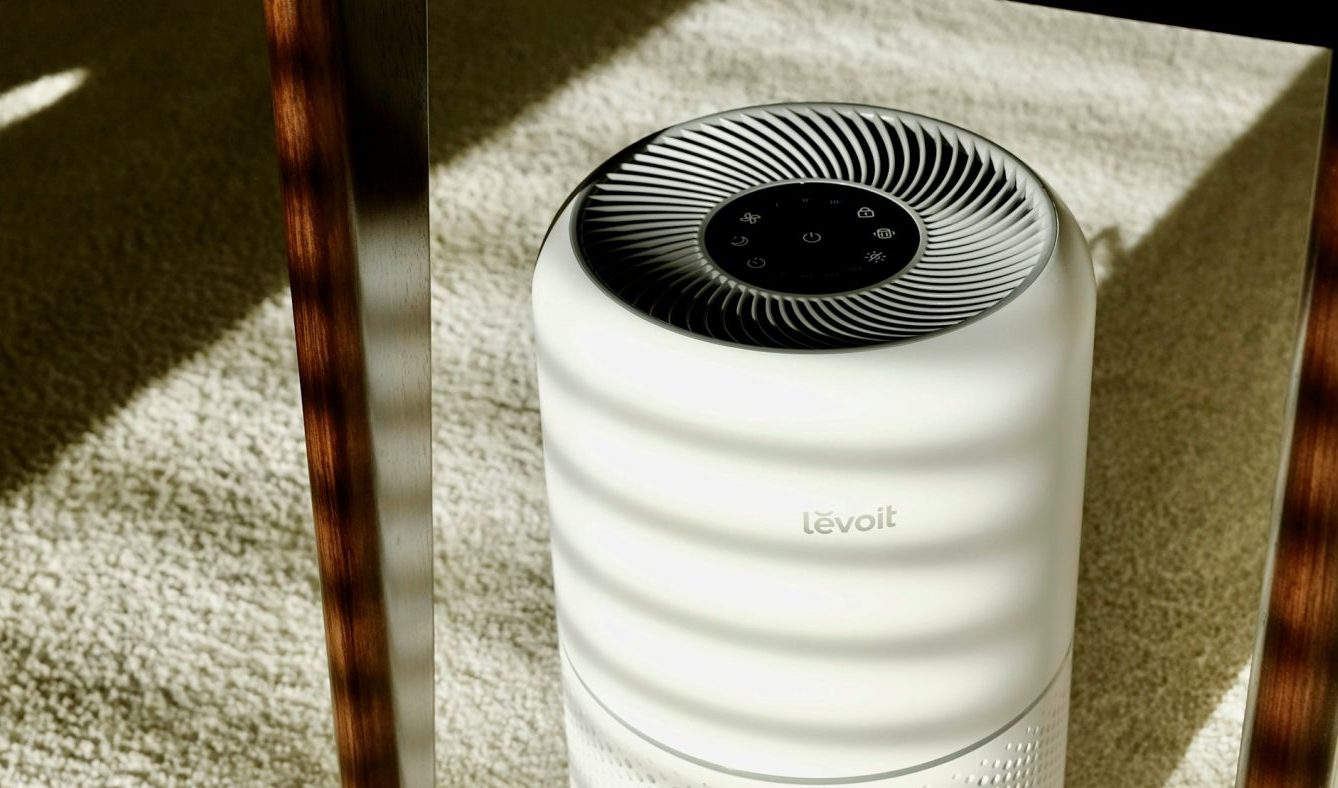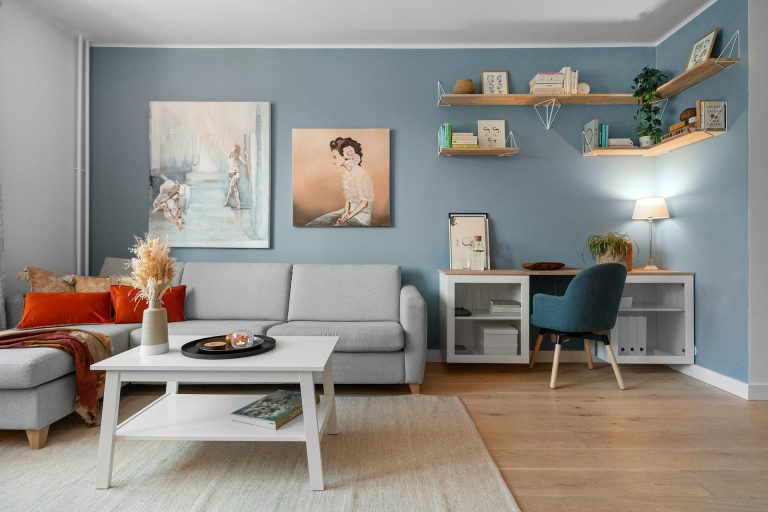Realistic Ways to Improve Indoor Air Quality at Home

Indoor air quality is a foundational component of a healthy living environment. Poor air quality can aggravate allergies, worsen respiratory conditions, and impact overall well-being, often without noticeable signs. While devices like air purifiers can help, you don’t necessarily need expensive equipment to see meaningful results. By combining thoughtful cleaning practices, safer product choices, and select natural elements such as plants, homeowners can reduce indoor pollutants and elevate air quality. This guide outlines realistic, research-based strategies to help you reduce airborne pollutants and maintain a healthier home environment.
Clean With Air Quality in Mind
Cleaning practices influence not only the visual cleanliness of your home but also the air you breathe. Dust, allergens, pet dander, and other particles settle on surfaces and are easily re-released into the air through daily activity. Without routine maintenance, these pollutants accumulate and degrade indoor air quality over time. By focusing on key surfaces and improving your cleaning techniques, you can significantly reduce particulate levels in your living space. The following subsections explore where and how to clean more effectively for better air health.
Vacuuming Matters More Than You Think
Vacuuming is one of the most effective ways to manage airborne particles, especially in homes with carpeting or pets. Vacuum at least once or twice weekly, paying special attention to high-traffic areas. Use a vacuum with a properly maintained filter to prevent dust from being released back into the air. Be sure to empty the vacuum canister regularly and inspect the filter for clogs. For best results, include baseboards, under furniture, and stairs in your routine. Consistent vacuuming is a cornerstone of any air-quality maintenance plan.
Don’t Skip Soft Surfaces and Hidden Areas
Soft surfaces such as upholstery, drapes, and rugs collect dust and allergens just as readily as floors. These areas are often missed in weekly cleaning routines, but they play a key role in managing indoor air quality. Vacuum or wash curtains, shake out rugs, and consider steam cleaning upholstered furniture several times per year. Areas like ceiling fan blades, windowsills, and behind large furniture can also harbor settled particles. Addressing these spaces helps reduce allergen levels and prevents particles from becoming airborne again. Regular attention to soft and hidden surfaces supports cleaner, healthier air throughout the home.
Keep Your Vents Clean
HVAC vents and air registers are a central distribution point for both clean and contaminated air. Over time, these surfaces can accumulate dust, pet hair, and other debris that gets recirculated throughout the home. Cleaning your vents monthly with a vacuum attachment or a damp cloth prevents buildup. Equally important is maintaining your system’s air filter, which should be replaced every 2–3 months, or more frequently if you have pets or allergies. Clogged filters reduce airflow efficiency and increase pollutant levels. Keeping vents and filters clean enhances both air quality and system performance.
Choose Cleaning Products That Don’t Pollute
Many commercial cleaning products contain chemicals that contribute to indoor air pollution. These include volatile organic compounds (VOCs), synthetic fragrances, and harsh solvents, which can cause eye, nose, and throat irritation. In enclosed spaces, repeated exposure may increase exposure to respiratory irritation and long-term medical risks. Choosing safer alternatives reduces these risks and contributes to a healthier indoor environment. Below are guidelines for identifying and selecting cleaning products that promote clean air.
Avoid These Chemical Offenders
Products such as aerosol sprays, bleach-based disinfectants, and ammonia-based glass cleaners often contain high levels of VOCs. These chemicals evaporate quickly and remain airborne, increasing pollutant concentrations inside the home. Fragrance additives are especially problematic, as they frequently include phthalates and other sensitizers. In bathrooms or poorly ventilated areas, these chemicals can accumulate to unhealthy levels. Consider replacing these items with less harmful options and only use them when absolutely necessary. Proper ventilation is essential whenever chemical cleaners are used.
Look for Low-Tox or Fragrance-Free Options
When shopping for safer alternatives, look for third-party certifications such as EPA Safer Choice, Green Seal, or EcoLogo. These labels indicate the product meets strict safety and environmental standards. Fragrance-free products are generally better for those with allergies or sensitivities and reduce unnecessary chemical exposure. Plant-based cleaners can be effective when used properly, particularly on non-porous surfaces. While they may not have the same synthetic scent, they are less likely to contribute to poor air quality. Transitioning to low-toxicity products helps maintain a safer cleaning environment.
Try DIY Alternatives for Everyday Cleaning
Homemade cleaners are often equally effective as store-bought options for routine maintenance tasks while minimizing exposure to harmful chemicals. A mixture of white vinegar and water serves as an all-purpose surface cleaner. Baking soda is useful for scrubbing sinks, bathtubs, and kitchen counters without releasing fumes. Castile soap, made from natural oils, can be diluted and used for a wide variety of cleaning applications. Adding essential oils can offer natural scent alternatives, but use them sparingly and test for sensitivity. DIY solutions are cost-effective, customizable, and safer for long-term indoor air management.
Use Houseplants to Support (Not Replace) Clean Air
The role of houseplants in air purification is often overstated, yet they can still contribute positively to your indoor environment. Scientific studies have shown that while plants can absorb certain pollutants, their impact in real-world home settings is limited. However, they offer other benefits such as humidity regulation, aesthetic value, and psychological well-being. Used in combination with other air quality practices, houseplants can support a healthier home atmosphere. Below are recommendations for choosing, maintaining, and benefiting from indoor plants.
The Truth About Plants and Air Quality
A widely cited 1989 NASA study showed that houseplants could remove VOCs from sealed test chambers. However, these findings don’t translate directly to residential environments, where airflow and pollutant levels differ significantly. In most homes, a large number of plants would be required to impact air quality meaningfully. That said, plants do contribute to improved humidity and can capture dust on their leaves. They can enhance emotional well-being by helping to reduce stress and improve focus. When appropriately managed, houseplants are a valuable part of a holistic indoor wellness plan.
Best Low-Maintenance Indoor Plants
Choosing the right plants can reduce care demands while still offering air-enhancing benefits. Snake plants are drought-resistant and tolerate low light, making them ideal for beginners. Spider plants adapt easily and produce offshoots that can be propagated, while peace lilies contribute to humidity control (note that they are toxic to pets). Pothos and aloe vera are also strong options for low-light or indirect sun conditions. All of these plants are known for their resilience and adaptability. Selecting low-maintenance varieties ensures you can enjoy the benefits of indoor greenery with minimal upkeep.
Keep Them Clean and Mold-Free
For houseplants to support a healthy environment, they must be adequately maintained. Keep plant leaves free of dust with a damp cloth to support optimal growth, air circulation, and absorb light properly to prevent buildup that hinders photosynthesis and traps allergens. Avoid overwatering, as wet soil can promote mold growth and attract pests. Ensure pots have adequate drainage and monitor for signs of root rot or mildew. Avoid using compost or organic soil indoors unless it has been sterilized to reduce mold risk. By maintaining clean and healthy plants, you ensure they remain a positive addition to your air quality strategy.
Develop Healthier Cleaning Habits
Beyond the tools and products you use, the way you clean your home also affects air quality. Cleaning practices that stir up dust or leave behind chemical residues can worsen indoor air conditions. Adopting healthier methods improves both surface cleanliness and respiratory safety. Consistent, mindful habits are often more effective than deep cleaning done infrequently. The following sections outline key techniques for cleaning in ways that actively support better indoor air.
Ditch the Feather Duster
Traditional feather dusters are ineffective for modern air quality needs, as they redistribute particles rather than capture them. Microfiber cloths are a better choice because they rely on electrostatic attraction to hold dust and prevent it from becoming airborne. For optimal results, use slightly damp cloths, which prevent dust from becoming airborne during cleaning. Always clean from top to bottom, beginning with high shelves or ceiling fans. This ensures that dislodged particles settle on lower surfaces, which can then be removed in subsequent steps. Upgrading your dusting method can significantly reduce airborne particles.
Wash Linens Weekly
Linens such as sheets, pillowcases, and blankets collect skin cells, dust mites, and pet dander, all of which impact air quality. Washing these items weekly in hot water helps eliminate allergens and reduces irritant levels in bedrooms and living spaces. Decorative pillows, throws, and mattress covers should also be cleaned on a regular basis. For those with allergies, hypoallergenic bedding materials and covers can further limit dust mite accumulation. Consistent laundering supports better sleep and cleaner air. The bedroom, in particular, benefits from this routine due to the amount of time spent there.
Sweep and Mop with Care
Dry sweeping can launch dust into the air rather than remove it, especially on hard surfaces like wood and tile. A damp mop or electrostatic floor cleaner is more effective at capturing particles without redistributing them. Avoid strong-scented floor cleaners, which can contain VOCs and other irritants. Instead, use a diluted, low-toxic cleaner or a mix of water and mild soap. Be thorough in corners and along baseboards, where dust often collects unnoticed. Regular and mindful floor maintenance represents a fundamental yet significant measure to boost air quality inside the home.
Keep Indoor Conditions Balanced
Air quality is heavily influenced by environmental conditions such as humidity, ventilation, and temperature. Properly balancing these factors helps control allergens, prevent mold growth, and support overall comfort. Without attention to airflow and moisture control, pollutants can linger and even multiply. Monitoring and managing your indoor conditions is a practical and effective way to ensure long-term air quality. The strategies listed here represent a complete framework for maintaining a balanced home environment.
Manage Humidity the Right Way
Humidity levels that are too high or too low both pose challenges to indoor air quality. Ideally, indoor humidity should remain between 40% and 50%. Too much moisture encourages mold and dust mite growth, while air that is too dry can lead to irritated airways and dry skin. Monitor moisture levels using a hygrometer and implement a dehumidifier in areas susceptible to moisture, including basements and bathrooms. During winter months, a humidifier may be helpful to maintain comfort and protect wood furnishings. Controlling humidity is a crucial part of maintaining healthy indoor air.
Let Fresh Air In—When It’s Safe
Bringing in outside air is one of the easiest ways to dilute indoor pollutants. On days when outdoor air quality is good, open windows for 15 to 30 minutes to allow for natural ventilation. Early mornings and after rain are typically better times to ventilate, as pollen and pollution levels tend to be lower. Promoting air circulation through cross-ventilation via windows positioned across from each other in the home enhances airflow and speeds up the air exchange. If you live in a high-traffic area, avoid ventilation during peak commute times. Strategic ventilation supports all other air-cleaning efforts.
Use Exhaust Fans Strategically
Exhaust fans significantly contribute to the removal of moisture and contaminants at their source. In bathrooms, fans help prevent mold caused by condensation from hot showers. In kitchens, fans reduce smoke, grease particles, and culinary odors that can hang in the air long after cooking. Ensure that fans vent to the outside, not into attic spaces or closed systems, for maximum effectiveness. Clean fan grilles and motors regularly to maintain airflow and performance. Proper use of exhaust systems complements natural ventilation and improves the overall indoor air environment.
Final Thoughts: A Healthier Home is Built One Habit at a Time
Creating better indoor air quality does not require major renovations or expensive devices. Instead, consistent habits—cleaning effectively, choosing safer products, managing humidity, and incorporating beneficial elements like plants—have a lasting impact. Each of these strategies contributes to a layered, sustainable approach to a healthier home. By making incremental improvements, you can create a living space that is both comfortable and breathable. Your indoor environment reflects your habits, and small changes often lead to significant long-term benefits. A cleaner home starts with cleaner air, and that begins with informed, practical decisions.






